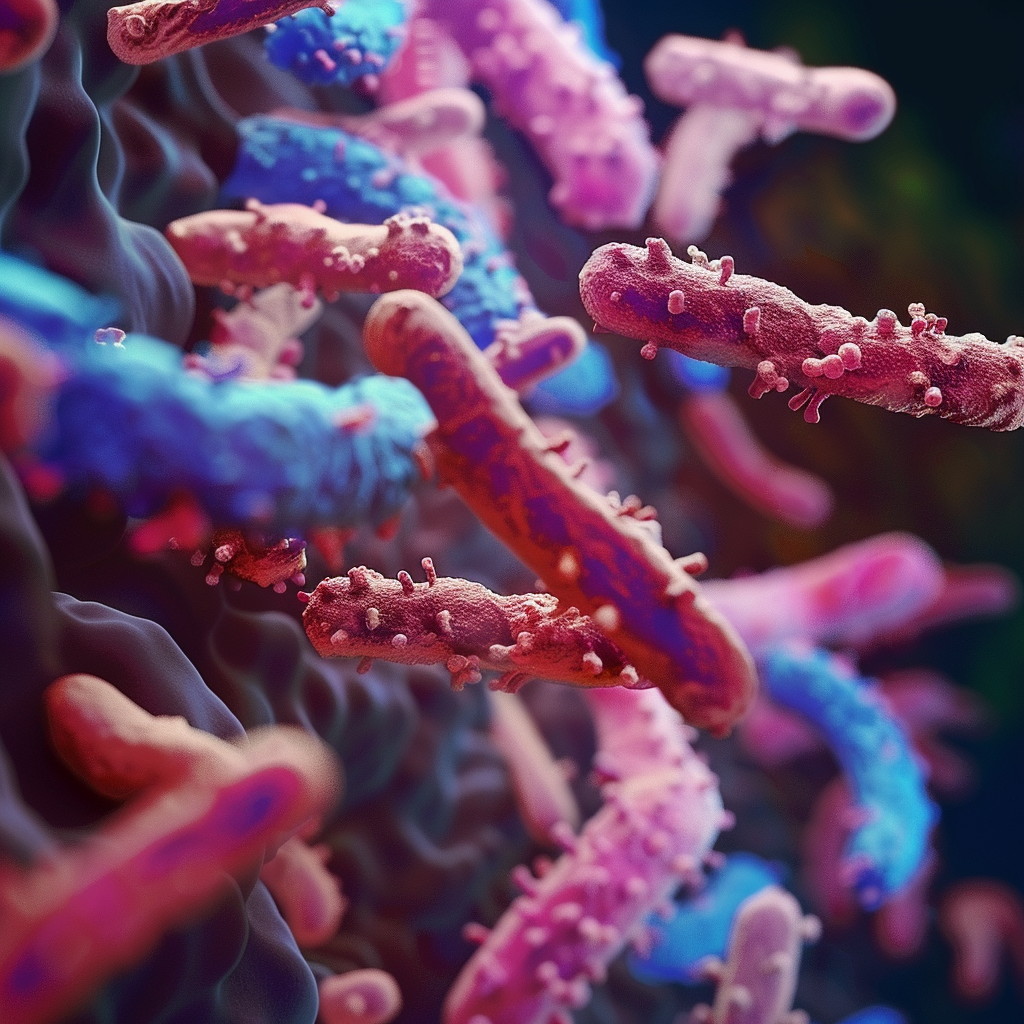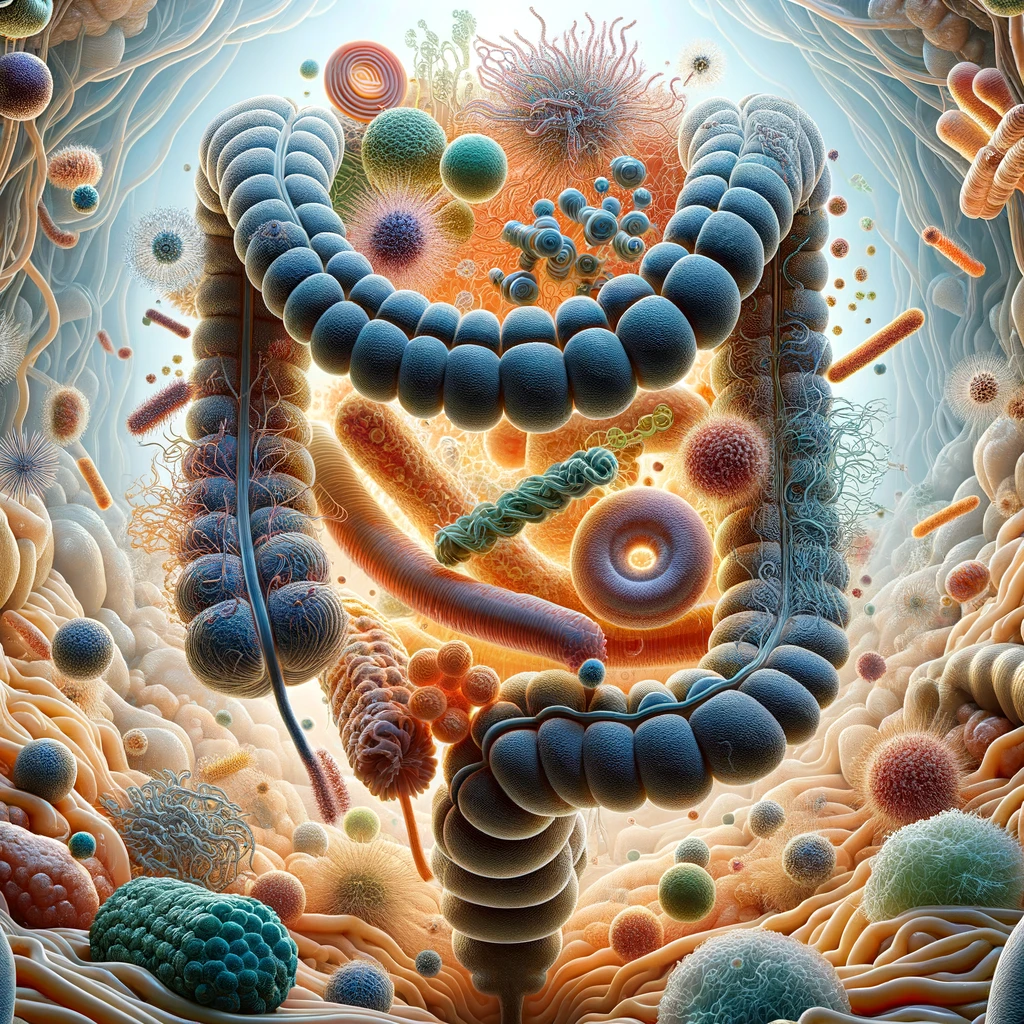The microbiome is a hot topic in almost everything today. We are learning more each day about its massive impact on digestion, wellness, mental health, chronic disease risk, and more… and it has changed the way we think about health since the turn of the millennium.
The gut microbiome is an ecosystem of trillions of microorganisms including bacteria, fungi, parasites, and viruses, most of which live in your digestive tract, or gut [1]. Even more surprisingly is the fact that your microbiome has over 100 times the number of genes compared to your own genome [2]. In general, bacteria are the predominant organisms we look at in the microbiome. While bacteria have received a bad reputation over the last 100+ years, the bacteria in the gut microbiome are most often important residents in your body that allow for essential, optimal – even vital – functioning.
The gut microbiome – an important factor for our development and health
The gut microbiome provides many essential functions, ranging from early-life immune system development to food digestion and vitamin synthesis and to influencing our health and potentially behavior. In fact, the microbiome is so vast and plays such an important role in the human body that it is often considered to be like an additional organ. For example, the bacteria in the microbiome can synthesize vitamins K and B12 on their own, contributing to your body’s essential vitamin needs [3]. The gut microbiome also breaks down fiber that the human body cannot otherwise digest, and in turn produce specific molecules [4]. In some cases, these molecules act as a nutrient for the digestive tract itself [5]. Many of these molecules also play vital roles in human health as well, and this explains at least one additional way the foods we consume are for our health [6]!
Just like any other organ, it is imperative the microbiome maintain its balance for optimal health. When viruses, antibiotics, extreme diets, or environmental factors shift the balance of the microbiome it can throw off its equilibrium and have potential health implications. An altered microbiome has been observed in numerous conditions and diseases including asthma [7], Type 1 diabetes [8], cardiovascular disease [9], obesity [10], [11], inflammatory bowel diseases [12], [13] , eczema [14], allergies [15], and more.

The gut microbiome – an incredibly important factor in our health
How to achieve the optimal gut microbiome for your health
Now that you know the power the microbiome, you may want to know: “What is the perfect microbiome and how can I achieve it to improve my health?”. As you can imagine, this can’t be answered in a few lines of an article. What we do know is that there is likely an optimal microbiome for you. In other words, outside of a few general recommendations that most of us should be following (consuming more fiber, fruits and vegetables, and a varied diet), the microbiome is so personalized that we cannot currently make sweeping recommendations that work for everyone. Part of this is due to the numerous exposures we’ve all occurred throughout life and how our microbiome has been shaped. So, the best bet is to work with your unique microbiome profile to find its own optimal balance.
One general way most of us can improve our gut microbiome: consuming fiber-rich foods and improving the variety in our diet. However, each gut microbiome reacts differently to different sources of fiber.
The microbiome is first established prenatally and is refined during birth (16) and changes immensely over the first year or life [16]. The microbiome has been shown to be change in parallel to dietary changes, meaning we can use targeted precision or personalized diets to impact the makeup of the bacteria in your gut, which may improve your health [4]. Add onto this all the additional environmental, behavioral, and lifestyle events we experience, and how these can shape your microbiome and even health, it really starts to become complex!
Personalized nutrition – integrating your gut microbiome into the equation
To this end, it is incredibly important that any solution that speaks about or uses the gut microbiome integrates the variety of factors that makes your microbiome yours. Knowing the importance of personal experiences, biology, and behaviors on health and the gut microbiome, we aimed to simplify personalized nutrition for everyone. We have developed integrative and evidence-based scientific models with understandable and applicable recommendations that adapt to your life – including those uncontrollable events. This means recommendations are optimized for your metabolic health and your uniqueness – from your current health, habits, lifestyle, and environment all the way down to your microbiome.
Interested in learning more?
Check out our articles on the gut microbiome, nutrition, and health.
More about Integrative Phenomics’ science for precision and personalized nutrition
[1] Ursell et al., Nutrition Reviews, 70, suppl_1, pp. S38–S44, Aug. 2012, doi: 10.1111/j.1753-4887.2012.00493.x.
[2] Qin et al., Nature, 464, 7285, pp. 59–65, Mar. 2010, doi: 10.1038/nature08821.
[3] LeBlanc et al., Current Opinion in Biotechnology, 24, 2, pp. 160–168, Apr. 2013, doi: 10.1016/j.copbio.2012.08.005.
[4] Deehan et al., Cell Host & Microbe, 27, 3, pp. 389-404.e6, Mar. 2020, doi: 10.1016/j.chom.2020.01.006.
[5] https://www.jlr.org/article/S0022-2275(20)35124-5/fulltext.
[6] https://www.nature.com/articles/s41579-020-0438-4.
[7] Lynch, Annals ATS, 13, Supplement_5, pp. S462–S465, Dec. 2016, doi: 10.1513/AnnalsATS.201605-356AW.
[8] Vatanen et al., Nature, 562, 7728, pp. 589–594, Oct. 2018, doi: 10.1038/s41586-018-0620-2.
[9] Fromentin et al., Nat Med, 28, 2, pp. 303–314, Feb. 2022, doi: 10.1038/s41591-022-01688-4.
[10] Aron-Wisnewsky et al., Gut, 68, 1, pp. 70–82, Jan. 2019, doi: 10.1136/gutjnl-2018-316103.
[11] Cotillard et al., Nature, 500, 7464, pp. 585–8, Aug. 2013, doi: 10.1038/nature12480.
[12] Manichanh et al., Gut, 55, 2, pp. 205–211, Feb. 2006, doi: 10.1136/gut.2005.073817.
[13] Sartor, Nat Rev Gastroenterol Hepatol, 3, 7, pp. 390–407, Jul. 2006, doi: 10.1038/ncpgasthep0528.
[14] Kong et al., Journal of Investigative Dermatology, 137, 3, pp. 561–568, Mar. 2017, doi: 10.1016/j.jid.2016.10.033.
[15] Hoskinson et al., Nat Commun, 14, 1, p. 4785, Aug. 2023, doi: 10.1038/s41467-023-40336-4.
[16] https://www.science.org/doi/10.1126/scitranslmed.aad0917.


